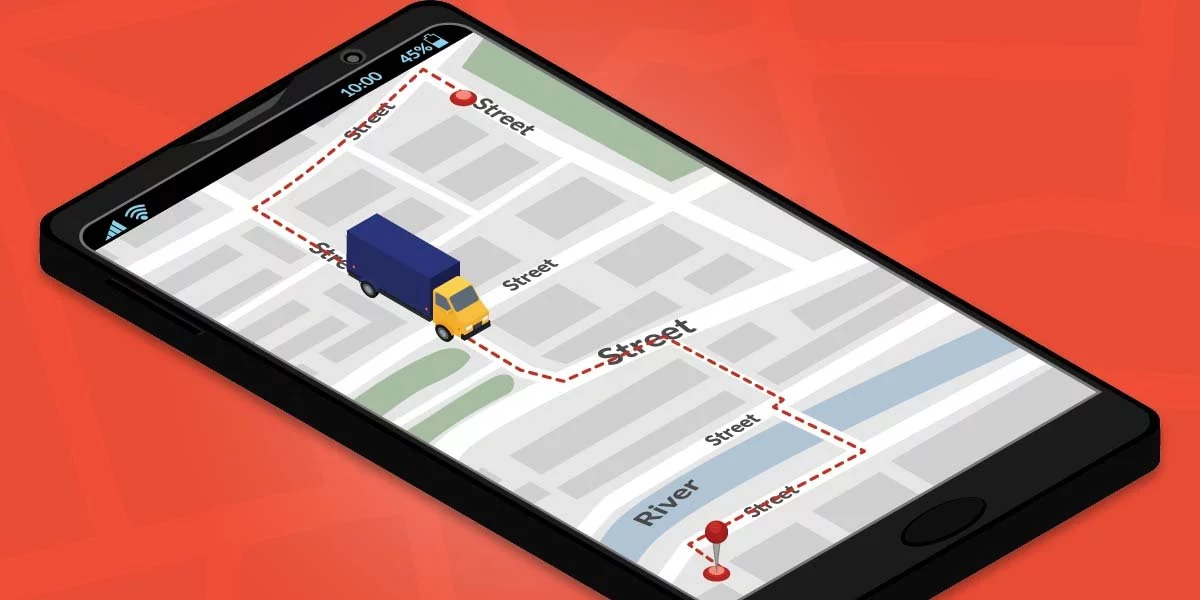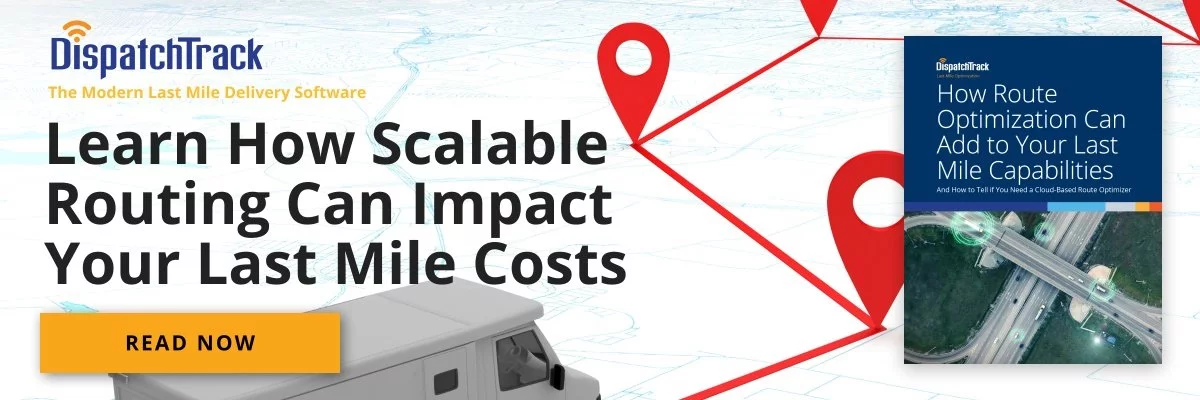Modern technology may seem like it can work miracles, such that having a route optimization solution is all you need to achieve delivery success. Although the right route planning system is incredibly useful and can do a great deal for your fleet, ensuring driver satisfaction and empowerment can be just as powerful.

Both of these things go hand in hand—the right technology lets you take advantage of your drivers’ experience and knowledge, while your drivers’ experience helps you use the technology to the fullest.
This is why it’s vital to implement delivery planning software that actually works for your drivers, making their lives easier and giving them the resources they need to delight customers and bring your brand to life.
Drivers Need to Have Confidence in Their Technology
Route optimization software can be very effective at planning routes that reduce the number of miles and maximize the utilization of drivers, vehicles, and other assets. And using data derived mobile app updates, telematics, GPS tracking, and electronic proof of delivery, it’s possible to compare how the actual routes were driven vis-a-vis the original route plans.
If there is a difference between the two, discussions with drivers can be extremely instructive. When drivers aren’t sticking to the routes that have been assigned to them, the issue may be a lack of confidence: they don’t think that they’re actually taking the best route based on their experience, or they’re worried that there’s no way for them to hit the ETAs that have been promised to customers.
If you want to update the processes and technology used by office-based employees to complete their tasks, you need to show drivers that it’s worthwhile for them to get on board—e.g. by making it clear that the new routes actually work, and that they’ll help drivers to complete more stops per day and potentially get paid more as a result. There is a tendency to fall into an “us versus them” mentality and avoid seeking input from drivers out of fear that they will only complain. Implementing route optimization technology provides an opportunity to motivate drivers to feel that their work is essential and that the new tools being adopted are actually going to make their lives easier. When you can create this kind of confidence, drivers will be more likely to actually stick to the routes they’re assigned.
Happy Drivers Perform Better—Delivery Truck Routing Software Can Help
In many cases, your delivery driver is the only person that your clients will interact with as part of their relationship with you. Thus, you must equip your drivers with the necessary tools in order to make those interactions successful. In a meeting with a customer, you have a golden opportunity to reinforce your service promises and leave customers with a positive impression of your business. The right technology tool can make this process as simple and effective as possible for your drivers.
For instance, it’s hard for drivers to leave a good impression on your customers if they were late in delivering the packages. A delivery routing system that is properly utilized will go a long way in helping your drivers create a positive customer delivery service by, first of all, ensuring that drivers are working to meet ETAs that are actually feasible. This does more than just delight customers, it also reduces driver stress.
An effective truck route planning system, at its core, simply improves the lives of drivers. They’re given feasible routes, they have ETAs they can actually meet (and that update in real-time), and they’re empowered with mobile apps that streamline complicated processes and reduce paperwork. This type of support increases efficiency, allowing the drivers to make more drops per shift, all while remaining happy, confident, and capable of delivering friendly and professional customer service.
 Management Needs to Motivate Drivers to Play a Role in the Solution
Management Needs to Motivate Drivers to Play a Role in the Solution
Drivers need to be informed that their feedback is critical to achieving business objectives through the proper use of route planning software. Your drivers are an important part of the continuous improvement process and it’s important to make that clear. When you can find a way to incentivize them to engage with the technology (e.g. bonuses for the best performer), the underlying benefits of the solution (e.g. fewer late deliveries) will become more clear.
Keeping track of and sharing key performance indicators (KPIs) is important for fleet management in all areas, including that of drivers. A scorecard should be assigned to each truck driver. Your team and you can decide what to do with this information. In any case, you should communicate clearly and frequently with each driver to let them know how they are doing in regard to the KPIs that the management has decided on.
Incorporating Real-World Knowledge
For any new initiative, feedback is key. Distribution companies face a number of complications in getting the right goods to the right place at the right time, many of them owing to the potential disconnect between the team responsible for delivery planning and the folks who are actually carrying out the deliveries.
It is the routing team’s responsibility to construct routes to the best of its ability, using known parameters and rules. However, plans can collapse during driver assignments if drivers and their dispatchers have previous knowledge about common routes that they failed to share with the route planning team. Drivers’ desire to use their “real-world” experience often leads them to implement impromptu changes that result in less efficient routes.
If you can ensure that your delivery route software is actually gathering data from delivery runs and incorporating real-world information into the way it creates routes, you can do a lot to prevent drivers from going off course. This can include tracking traffic patterns, accounting for differences in the time it takes to perform certain kinds of deliveries, and even accounting for differences in speed between one driver and the next. The result is more satisfied drivers and a reduced driver turnover rate.
Trust Is Key to Success
Communication is key. In successful operations, drivers are frequently gathered together to emphasize the importance of route efficiency and to solicit feedback. Although it seems obvious, it is surprising how few companies actually follow this strategy.
You can encourage collaboration by focusing on communication. By allowing your divers to share their experiences, you enable them to feel appreciated and validated. This—plus a track record of really and truly empowering your drivers with the decisions you make—can help build trust. As a result, drivers will be more likely to successfully execute the route plans created by your planning team using your truck routing software.
In the end, it’s time for businesses to place a greater emphasis on drivers’ input and happiness to ensure that the sophisticated technology tools they’re adopting (e.g. truck route optimization software) will actually help drivers to perform their tasks even more efficiently and delight your customer more consistently.
